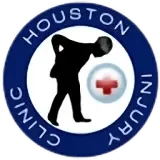4 LOCATIONS TO FILE YOUR ACCIDENT CLAIM
8015 Gulf Freeway
Houston, TX 77017
(713) 480-6254
17049 El Camino Real, Ste. 204
Houston, TX 77058
(713) 480-6254
911 Antoine Dr.
Houston, TX 77024
(713) 480-6254
5629 FM 1960, Ste. 121
Houston, TX 77069
(713) 480-6254
We're Injury Doctors specializing in:
Workers Compensation - Auto Accident Injury - Personal Injury - Slip and Fall Injury - Orthopedic Injury - Sports Injury - Chiropractic Care
© Copyright 2024 Americana Injury Clinic - All Rights Reserved, Privacy Policy
